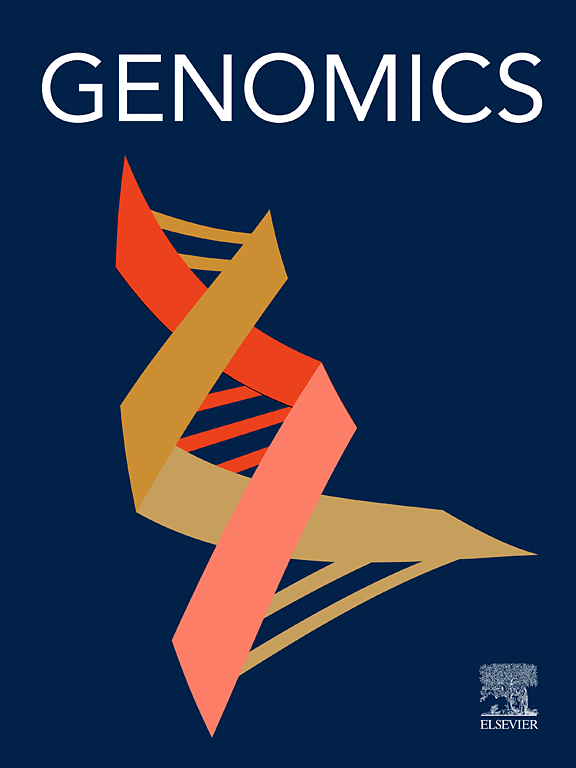黄芩苷对绵羊乳腺细胞的生物学效应及其调控机制的转录组学分析。
IF 3.4
2区 生物学
Q2 BIOTECHNOLOGY & APPLIED MICROBIOLOGY
引用次数: 0
摘要
黄芩苷是一种天然类黄酮化合物,具有广泛的生物活性,包括抗氧化和抗炎特性。在哺乳期中期,我们发现牛血清中黄芩苷的丰度明显高于羊血清。提示黄芩苷可能具有调节泌乳性能的作用。本文研究了黄芩苷对绵羊乳腺上皮细胞(OMECs)增殖、氧化应激反应和主要乳成分合成能力的生物学影响。并利用转录组学分析探讨可能的调控机制。结果表明,25 μg/mL黄芩苷能显著增强OMECs的增殖能力、抗氧化能力、甘油三酯合成能力和乳糖合成能力。转录组学分析中,从25 μM黄芩苷处理组(baicalin)和0 μM黄芩苷处理组(NT)中筛选出150个差异表达基因(deg)。DEGs的功能分析表明,脂质代谢过程、氧化应激反应、脂肪和糖的生物合成途径丰富。qRT-PCR结果显示,黄黄素处理的OMECs中,抗氧化相关负调控基因MPO显著下调,乳脂生物合成相关基因PLA2G12A、GPCPD1、LPIN1、FASN和乳糖生物合成相关基因MGEA5、RHOQ显著上调(P本文章由计算机程序翻译,如有差异,请以英文原文为准。
Biological effects of baicalin on the ovine mammary cells and regulatory mechanism study by transcriptomic analysis
Baicalin is a natural flavonoid compound with a wide range of biological activities, including anti-oxidant and anti-inflammatory properties. Previous we found that the abundance of baicalin in bovine serum is significantly higher than in ovine serum at mid-lactation. It suggests that baicalin may play a role in the regulation of lactation performance. Here, the biological effects of baicalin on proliferative, oxidative stress response, synthesis capacities of major milk components of ovine mammary epithelial cells (OMECs) were investigated. And the transcriptomic analysis was utilized to explore the possible regulatory mechanism. Results showed that 25 μg/mL baicalin can significantly enhance the proliferation, antioxidant, triglyceride and lactose synthesis capacities of OMECs. In transcriptomic analysis, 150 differentially expressed genes (DEGs) were screened between 25 μM baicalin treated (Baicalin) and 0 μM baicalin treated (NT) groups. Functional analysis of DEGs showed that lipid metabolic process, response to oxidative stress, biosynthesis of fat and saccharide pathways were enriched. qRT-PCR result showed that antioxidation-related negative regulatory gene MPO was significantly down-regulated and milk fat biosynthesis related genes PLA2G12A, GPCPD1, LPIN1, FASN and lactose biosynthesis related genes MGEA5, RHOQ were significantly up-regulated in baicalin treated OMECs (P < 0.01). In summarize, 25 μM baicalin can significantly enhance the proliferation, antioxidant and biosynthesis of milk fat and lactose capacities through lipid metabolic process, response to oxidative stress, biosynthesis of fat and saccharide pathways related genes regulation in OMECs. The study would provide a theoretical basis for the improvement of lactation performance and the exploration of lactation regulation theory of dairy sheep.
求助全文
通过发布文献求助,成功后即可免费获取论文全文。
去求助
来源期刊

Genomics
生物-生物工程与应用微生物
CiteScore
9.60
自引率
2.30%
发文量
260
审稿时长
60 days
期刊介绍:
Genomics is a forum for describing the development of genome-scale technologies and their application to all areas of biological investigation.
As a journal that has evolved with the field that carries its name, Genomics focuses on the development and application of cutting-edge methods, addressing fundamental questions with potential interest to a wide audience. Our aim is to publish the highest quality research and to provide authors with rapid, fair and accurate review and publication of manuscripts falling within our scope.
 求助内容:
求助内容: 应助结果提醒方式:
应助结果提醒方式:


